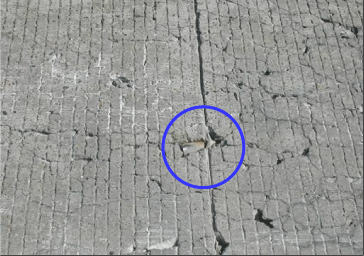8.1 Introduction
In PCC pavements, joints are provided to accommodate concrete volume changes due to temperature and moisture variations. In CPCD, both transverse and longitudinal joints are used. Only longitudinal joints are used in CRCP, except for expansion joints at the bridge approaches and transverse construction joints. These joints relieve stresses in concrete, thereby preventing or minimizing the potential for uncontrolled cracks. The concrete movement at the joints could be substantial, and joint sealants are provided to seal and protect the joints from the infiltration of water and incompressible foreign materials.
Joints are the weakest areas in PCC pavement. There is a discontinuity in the concrete at saw-cut joints, and wheel load is not 100% transferred from one slab to the next, which results in higher wheel load stress. When incompressible materials get into the joints, expansion of concrete slabs during high seasonal/daytime temperatures will squeeze the incompressible materials, and high localized stresses will develop in the concrete. Localized high concrete stresses can cause spalling in the joints. Also, if a good joint seal is not maintained, water can get into the joint and cause rust problems in dowel bars as shown in Figure 10-25.

Figure 10-25. Rusted dowel bar.
At the transverse joints in CPCD, dowel bars are used to improve load transfer efficiency (LTE). The higher the LTE, the lower the wheel load stress, and the better the pavement performance. For dowel bars to perform as they are intended, their alignment should be parallel to the direction of concrete movement, both horizontally and vertically. If dowel bars are misaligned, high stress concentration and cracking will result in concrete. Figure 10-26 illustrates a misaligned dowel bar.

Figure 10-26. Misaligned dowel bar.